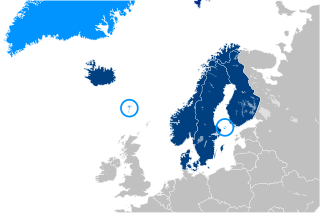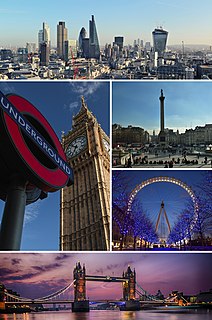A disability pension is a form of pension given to those people who are permanently or temporarily unable to work due to a disability. It is distinct from welfare.
Jobseeker's Allowance (JSA) is an unemployment benefit paid by the Government of the United Kingdom to people who are unemployed and actively seeking work. It is part of the social security benefits system and is intended to cover living expenses while the claimant is out of work.
The Minister of Veterans Affairs is the Minister of the Crown responsible for the Veterans Affairs Canada.
The Veterans' Preference Act is a United States federal law passed in 1944. It required the federal government to favor returning war veterans when hiring new employees in an attempt to recognize their service, sacrifice, and skills.

The CNIB Foundation is a volunteer agency and charitable organization dedicated to assisting Canadians who are blind or living with vision loss, and to provide information about vision health for all Canadians. Founded in 1918 as the Canadian National Institute for the Blind to assist soldiers who had been blinded in the First World War, CNIB originally offered sheltered care and specialized employment to people with vision loss. It has since expanded to include other programs and services, including research, public education, rehabilitation counselling and training, advocacy and an alternative-format library for people living with a print disability. It is a member of the Braille Authority of North America.

The Disabled American Veterans (DAV) is an organization created by the United States Congress for disabled military veterans of the United States Armed Forces that helps them and their families through various means. It currently has nearly 1.3 million members. As a 501(c)(4) social welfare organization, it is outside the purview of – and therefore not rated by – Charity Navigator.
The Soldier Settlement Board was established in Canada in 1917 to assist returned servicemen to set up farms.
The Canadian Mental Health Association (CMHA) is the Canadian association founded on April 26, 1918 by Dr. Clarence M. Hincks and Clifford W. Beers. Originally named the Canadian National Committee for Mental Hygiene, it is one of the largest and oldest voluntary health organizations operating in Canada.

The First Labour Government of New Zealand was the government of New Zealand from 1935 to 1949. Responsible for the realisation of a wide range of progressive social reforms during its time in office, it set the tone of New Zealand's economic and welfare policies until the 1980s, establishing a welfare state, a system of Keynesian economic management, and high levels of state intervention. The government came to power towards the end of, and as a result of, the Great Depression of the 1930s, and also governed the country throughout World War II.
Employment and Support Allowance (ESA) is a United Kingdom welfare payment for adults younger than the State Pension age who are having difficulty finding work because of their long-term medical condition or a disability. It is a basic income-replacement benefit paid in lieu of wages. It is currently being phased out and replaced with Universal Credit.
Sir Bernard Oppenheimer, 1st Baronet was a South African-British diamond merchant and philanthropist.
Conscription in the United Kingdom has existed for two periods in modern times. The first was from 1916 to 1920, the second from 1939 to 1960, with the last conscripted soldiers leaving the service in 1963. Known as Military Service from 1916 to 1920, the system of conscription from 1939 to 1960 was called National Service, but between 1939 and 1948, it was often referred to as "war service" in documents relating to National Insurance and pension provision.
Disability Living Allowance (DLA) is a social security benefit in the United Kingdom paid to eligible claimants who have personal care and/or mobility needs as a result of a mental or physical disability. It is tax-free, non-means-tested and non-contributory. The benefit was established by the Social Security Contributions and Benefits Act 1992, integrating the former benefits Mobility Allowance and Attendance Allowance and introducing two additional lower rates of benefit. Prior to 2013 it could be claimed by UK residents aged under sixty five years. However, the benefit was phased-out for the majority of claimants between 2013 and 2015 and replaced by a new Personal Independence Payment. DLA can still be claimed by children under sixteen and can still be received by existing claimants who were aged sixty five or over on 8 April 2013. The assessment system fails a sizable minority” of long-term disability benefit claimants. The assessment is too frequently subject to basic errors, insensitivity and ignorance about people’s disabilities, MPs stated.

Westfield War Memorial Village is a residence in the City of Lancaster, England. Initially created for ex-service men, women and families after World War I, it continues to provide accommodation for 189 residents.
Disability benefits are funds provided from public or private sources to a person who is ill or who has a disability.

Social security in Finland, or welfare in Finland, is, compared internationally, very comprehensive. In the late 1980s, Finland had one of the world's most advanced welfare systems, one that guaranteed decent living conditions for all Finns. Since then social security has been cut back, but still the system is one of the most comprehensive in the world. Created almost entirely during the first three decades after World War II, the social security system was an outgrowth of the traditional Nordic belief that the state was not inherently hostile to the well-being of its citizens, but could intervene benevolently on their behalf. According to some social historians, the basis of this belief was a relatively benign history that had allowed the gradual emergence of a free and independent peasantry in the Nordic countries and had curtailed the dominance of the nobility and the subsequent formation of a powerful right wing. Finland's history has been harsher than the histories of the other Nordic countries, but not harsh enough to bar the country from following their path of social development.

St Ebba's Hospital formerly Ewell Epileptic Colony (1904–1918) and later Ewell Mental Hospital (1927–1938) is a mental handicap and former psychiatric hospital near Epsom in the county of Surrey in the United Kingdom.
This disability rights timeline lists events outside the United States relating to the civil rights of people with disabilities, including court decisions, the passage of legislation, activists' actions, significant abuses of people with disabilities that illustrate their lack of civil rights at the time, and the founding of various organizations. Although the disability rights movement itself began in the 1960s, advocacy for the rights of people with disabilities started much earlier and continues to the present.
The National Union of Ex-Servicemen (NUX) was a socialist ex-servicemen's organisation founded in London in early 1919 with close links with the Labour Party. Many of its members were formerly supporters of the National Federation of Discharged and Demobilized Sailors and Soldiers and the Soldiers, Sailors and Airmen's Union (SSAU). Within six months it had grown from one branch with fifty members to over one hundred branches and claimed a membership of nearly 100,000. Its membership was boosted by the stance of the Federation against the 1919 United Kingdom railway strike in the autumn of that year: it called on Prime Minister David Lloyd George to "hold firm against Labour tyranny", causing tension in its ranks and prompting many left-wing members to leave and join NUX, which had supported the strike. By the end of 1919 NUX had 200,000 members and 200 branches.
The Repatriation Department was an Australian government department that provided support for disabled military veterans and widows of military personnel, as well as their dependents. It existed between September 1917 and June 1974.













